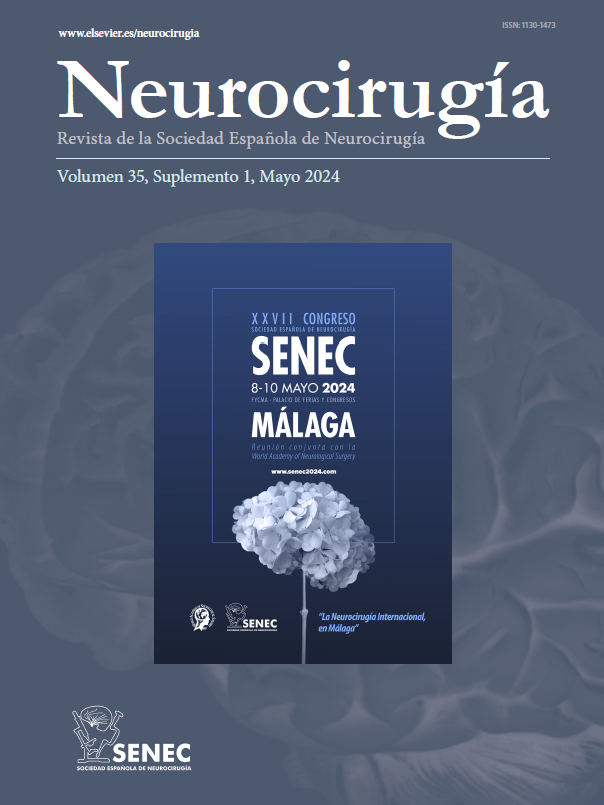O-028 - PERCUTANEOUS THORACOLUMBAR BURST-FRACTURE FIXATION - DOES ADDITIONAL ANTERIOR SUPPORT OFFER SIGNIFICANT BENEFIT?
Hospital Universitario Marqués de Valdecilla, Santander, España.
Introduction: Percutaneous pedicular screw fixation has become an increasingly popular go-to-management for thoracolumbar fractures without neurological injury. Anterior support by means of cemented vertebral augmentation (CVA) may contribute to improve the construct, but there is no clear evidence of its efficacy.
Objectives: To compare radiologic results between pedicle-screw-fixation (PS) and pedicle-screw-fixation plus CVA at 6-month-follow-up.
Methods: We performed a retrospective analysis of neurologically-intact-A3 and A4 AO Spine fractures managed percutaneously at our center throughout the last five years. Patients were divided in Group A (PS) and Group B (PS+CVA). We recorded demographics, pre and post-operative VAS, need for major opioids post-op., length of surgery (LOS), hospital stay (HS), and complications. Vertebral kyphotic angle (VKA) at diagnosis, 24 h, 3-months and 6-months were measured.
Results: 21 males and 13 females were operated. Median age was 57 years (Group A = 15 patients, Group B = 19 patients). Median LOS and HS were 139 minutes and 3 days respectively. Median preoperative and posoperative VAS were 6 and 2 (p < 0.001). 8 patients (23,5%) required major opioids postop. Median preoperative, 24h-post-operative, 3-months and 6-months VKA were 12.5o, 6.0o, 8.0o and 8.0o. The difference in VKA was statistically significant between preoperative measurements and 24 h (p < 0.001), 3-months (p < 0.001) and 6-months (p < 0.001) posoperative follow-ups. The only difference between Group A and B was the degree of VKA restoration at 24 h postop (4.60 vs. 7.63o; p = 0,030). No perioperative complications were recorded.
Conclusions: Although there is an evident selection bias in our series, both techniques have proven to be effective when managing vertebral fractures without neurological compromise. Initial VKA correction may be greater in CVA, but differences disappeared at 3-months follow-up. Further studies with larger number of patients are needed to determine the need for adding VKA in AO Spine type 3/4 fractures.







